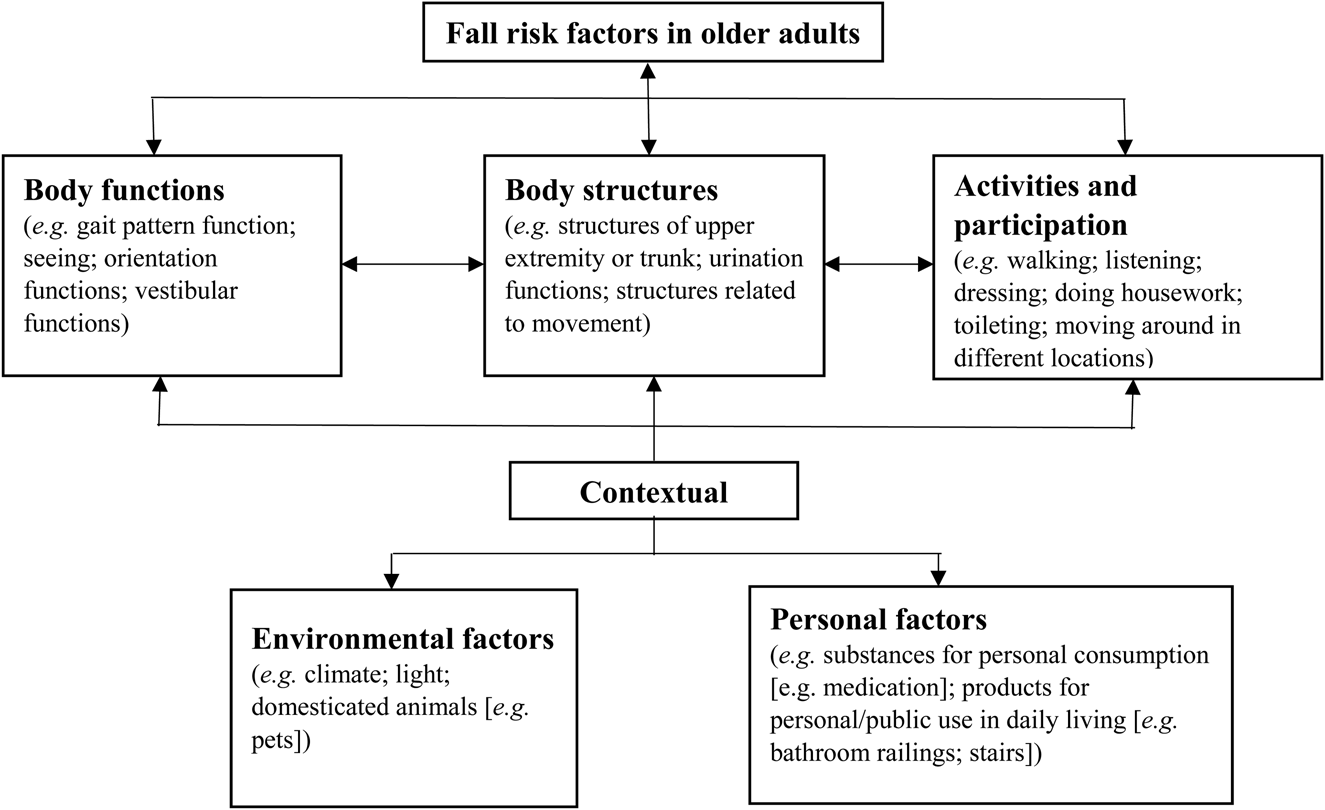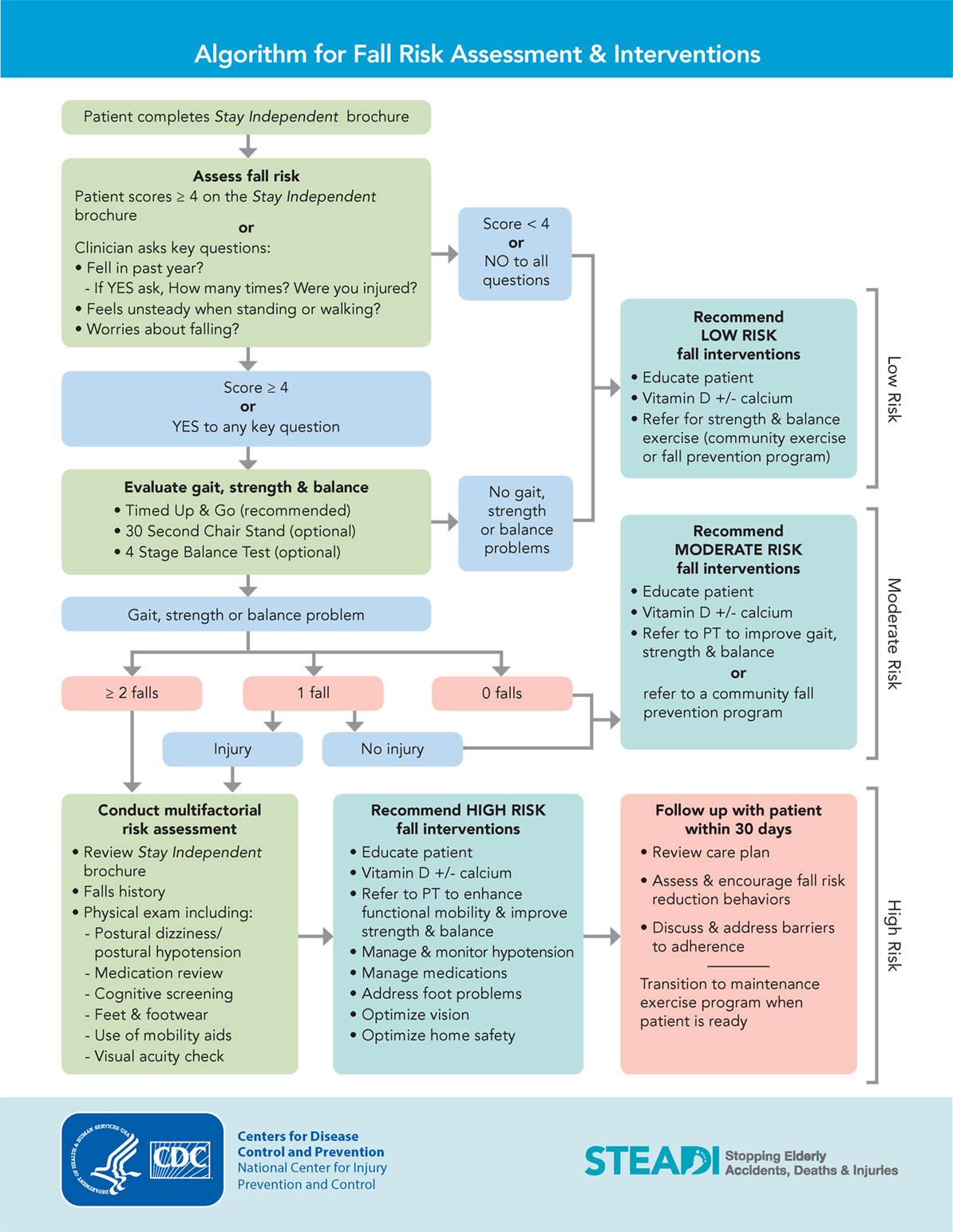Some Of Dementia Fall Risk
Some Of Dementia Fall Risk
Blog Article
Rumored Buzz on Dementia Fall Risk
Table of ContentsSome Known Incorrect Statements About Dementia Fall Risk Dementia Fall Risk Things To Know Before You BuyDementia Fall Risk Can Be Fun For AnyoneWhat Does Dementia Fall Risk Do?Not known Factual Statements About Dementia Fall Risk
The FRAT has three sections: drop threat condition, risk factor list, and activity plan. A Fall Threat Standing consists of data about background of recent falls, drugs, mental and cognitive status of the patient - Dementia Fall Risk.If the person ratings on a risk factor, the equivalent number of factors are counted to the individual's fall threat score in the box to the far appropriate. If an individual's autumn risk rating totals 5 or higher, the individual is at high danger for falls. If the individual ratings just 4 factors or lower, they are still at some threat of dropping, and the nurse needs to use their ideal medical evaluation to take care of all autumn threat elements as part of an all natural treatment strategy.
These standard methods, in basic, help establish a secure environment that decreases unintended falls and defines core safety nets for all clients. Indications are crucial for people in danger for falls. Health care service providers need to recognize that has the problem, for they are in charge of implementing actions to promote individual security and protect against drops.
More About Dementia Fall Risk
Wristbands need to include the patient's last and very first name, date of birth, and NHS number in the UK. Just red shade must be used to indicate special individual status.
Things that are too much might need the client to connect or ambulate needlessly and can potentially be a hazard or add to drops. Assists avoid the client from heading out of bed without any kind of aid. Nurses react to fallers' telephone call lights faster than they do to lights started by non-fallers.
Aesthetic problems can substantially create drops. Keeping the beds closer to the floor decreases the danger of falls and severe injury. Positioning the cushion on the flooring significantly reduces fall danger in some health care setups.
How Dementia Fall Risk can Save You Time, Stress, and Money.
People that are tall and with weak leg muscles that attempt to sit on the bed from a standing position are most likely to drop onto the bed since it's too reduced for them to decrease themselves securely. Likewise, if a tall client attempts to obtain up from a low bed without assistance, the client is most likely to drop back down onto the bed or miss out on the bed and drop onto the flooring.
They're designed to advertise timely rescue, not to prevent drops from bed. Distinct alarm systems can likewise remind the person not to rise alone. Using alarm systems can also be a replacement for physical restrictions. Aside from bed alarm systems, enhanced guidance for high-risk patients likewise may aid avoid drops.

People with a shuffling gait rise fall possibilities drastically. To reduce autumn risk, shoes ought to be with a little to no heel, slim soles with slip-resistant step, and support the ankles. Encourage client to use nonskid socks to prevent the feet from sliding upon standing. However, encourage individuals to put on proper, well-fitting shoesnot nonskid socks for ambulation.
How Dementia Fall Risk can Save You Time, Stress, and Money.
Clients, specifically older adults, navigate to these guys have actually decreased aesthetic ability. Illumination an unknown environment aids increase exposure if the person have to get up at night. In a study, homes with adequate illumination record fewer drops (Ramulu et al., 2021). Enhancement in lighting at home may reduce loss rates in older adults (Dementia Fall Risk). Using useful content stride belts by all health treatment providers can advertise security when aiding people with transfers from bed to chair.

Caretakers are reliable for ensuring a protected, protected, and secure atmosphere. However, researches demonstrated very low-certainty evidence that caretakers minimize loss danger in severe care health centers and only moderate-certainty that alternatives like video monitoring can minimize sitter usage without enhancing loss danger, recommending that sitters are not as valuable as at first thought (Greely et al., 2020).
The Facts About Dementia Fall Risk Revealed

Boosted physical conditioning lowers the danger for drops and restricts injury that is sustained when fall transpires. Land and water-based exercise programs may be similarly beneficial on balance and gait and thus minimize the threat for drops. Water workout might add a positive benefit on balance and gait for females 65 years and older.
Chair Increase Workout is a straightforward sit-to-stand exercise that helps strengthen the muscles in the thighs and buttocks and improves movement and self-reliance. The goal is to do Chair Increase exercises without using hands as the client becomes stronger. See resources area for a detailed instruction on how to perform Chair Surge workout.
Report this page